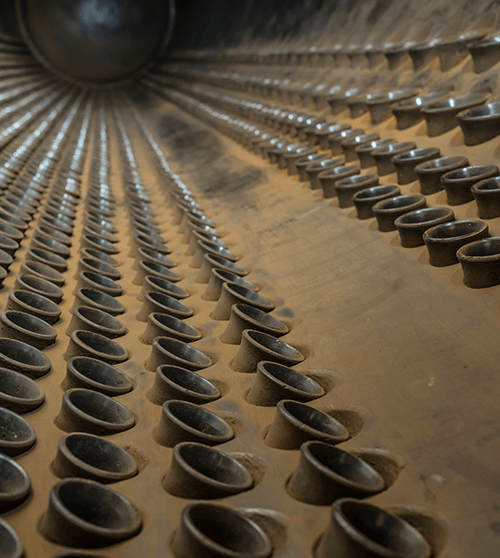Solution: Acoustic Emission Testing
Solution: Acoustic Emission Testing
Comparison of acoustic emission test / water pressure test
The great advantage of acoustic emission testing (AT) is that the required hydraulic pressure test or internal examination of pressure equipment can be replaced by AT. (see also DGÜW-V §41(3) and §42(6)).
A normal hydrostatic test has a number of disadvantages, e.g:
- Long interruptions of operation for the operator
- Within the scope of the design, certain system parts, e.g. supports, must be significantly overdimensioned only for the initial and recurring hydrostatic test
- The residual moisture remaining in the pressure equipment after the water pressure test can cause problems during the following period of use (corrosion, HIC)
- The water used for the water pressure test is contaminated afterwards
Advantages Acoustic Emission Testing (AT)
- In many cases, the pressure equipment can be tested close to the operating condition, i.e. in cryogenic applications, the material is also tested in this temperature range.
- The humidity caused by the hydrostatic test is avoided, as the pressure is usually applied by means of pneumatic media.
- only limited accessibility of the test object is required
- actively detects defects
- the operating medium does not have to be emptied
- no pressure test water is needed and it has to be emptied again
- the supporting structures of the vessel did not have to be designed for the pressure sample water weight, which is
- particularly important for large pressure air vessels
- there are low overall testing costs
- no bladder removal is necessary for hydraulic accumulators
Acoustic emission analysis is a powerful and versatile method for non-destructive testing of metallic pressure vessels, piping systems, reactors and the like.
A momentary, transient acoustic emission event is caused by released elastic energy, a local jerk, a local jump in motion.
This local jolt pushes the environment, which yields elastically and springs back. This creates an elastic wave that travels from the source – and cannot be stopped.
With a relatively small number of sensors at fixed positions, a structure can be 100% monitored or tested. It is not necessary to move the sensors over the test object to look for the fault!
Acoustic emission testing (AT) is used as an accompanying test method for acceptance testing, periodic testing and service life/ condition monitoring of pressure equipment, among other things.















